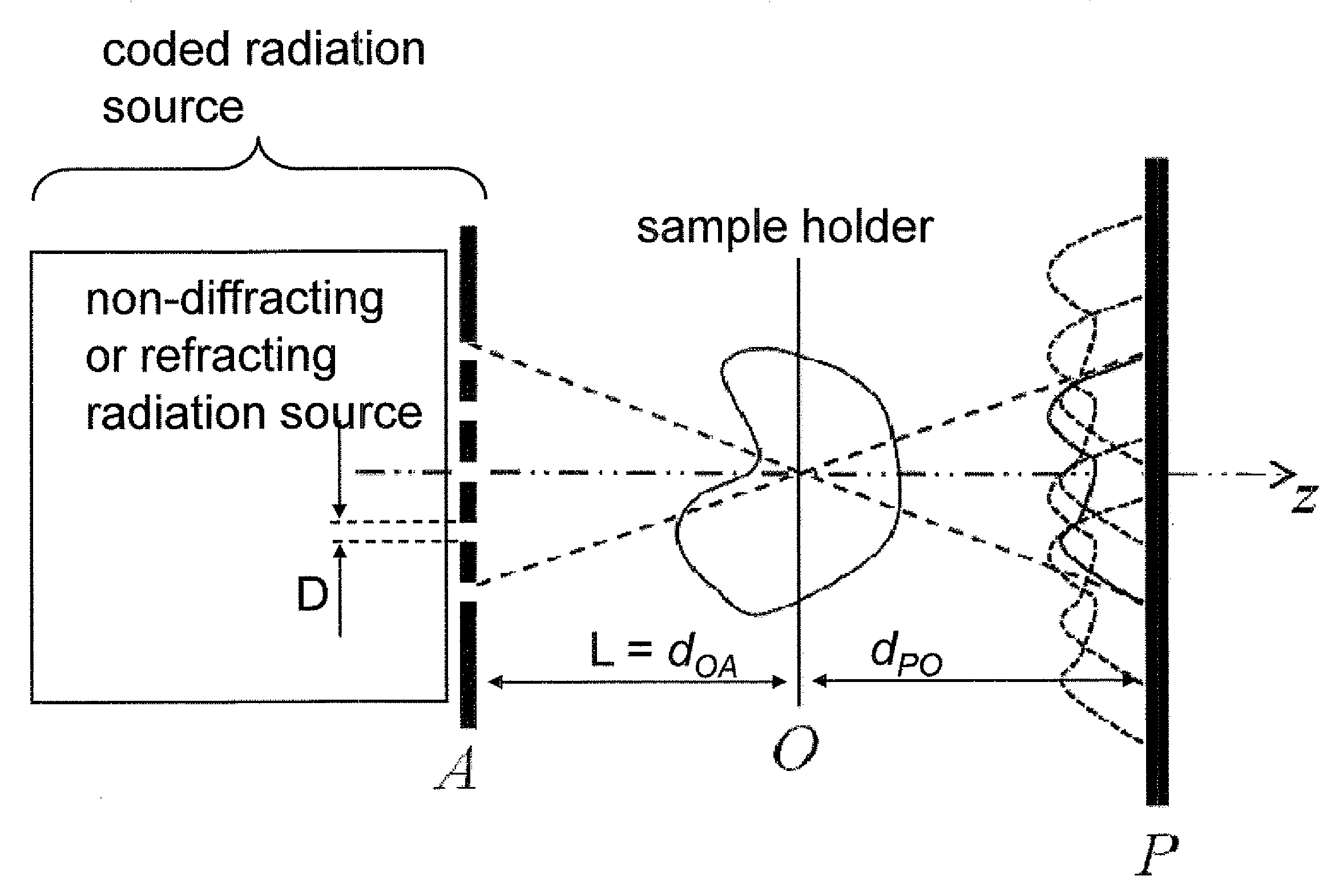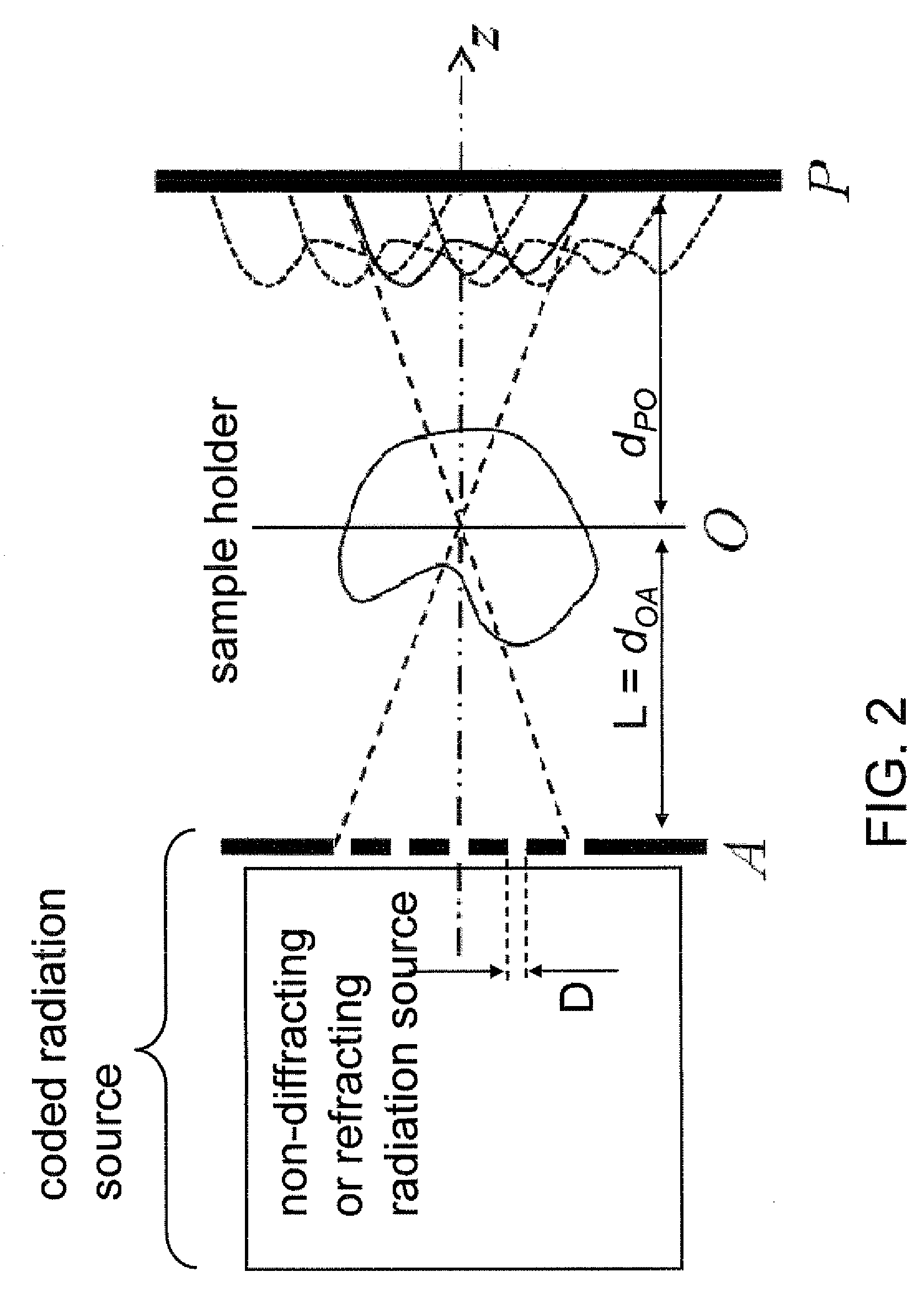Apparatus and method to achieve high-resolution microscopy with non-diffracting or refracting radiation
- Summary
- Abstract
- Description
- Claims
- Application Information
AI Technical Summary
Benefits of technology
Problems solved by technology
Method used
Image
Examples
Embodiment Construction
[0054]As stated above, the present invention relates to an imaging apparatus, a method of operating the same, and a program to perform the operation of the same. The present invention is now described in detail with accompanying figures. It is noted that like and corresponding elements mentioned herein and illustrated in the drawings are referred to by like reference numerals.
[0055]The present invention is described employing neutron radiation. However, the imaging apparatus of the present invention can be employed for any other type of non-diffracting radiation or refracting radiation including, but not limited to, X-ray, gamma ray, ultraviolet radiation, light in the visible spectral range (400 nm-800 nm wavelength), protons, alpha particles, electrons, charged ions, and neutral particles.
[0056]Referring to FIG. 2, a schematic diagram illustrates the geometry of the imaging apparatus of the present invention. The imaging apparatus employs a “coded radiation source” that includes a...
PUM
 Login to View More
Login to View More Abstract
Description
Claims
Application Information
 Login to View More
Login to View More - R&D
- Intellectual Property
- Life Sciences
- Materials
- Tech Scout
- Unparalleled Data Quality
- Higher Quality Content
- 60% Fewer Hallucinations
Browse by: Latest US Patents, China's latest patents, Technical Efficacy Thesaurus, Application Domain, Technology Topic, Popular Technical Reports.
© 2025 PatSnap. All rights reserved.Legal|Privacy policy|Modern Slavery Act Transparency Statement|Sitemap|About US| Contact US: help@patsnap.com



